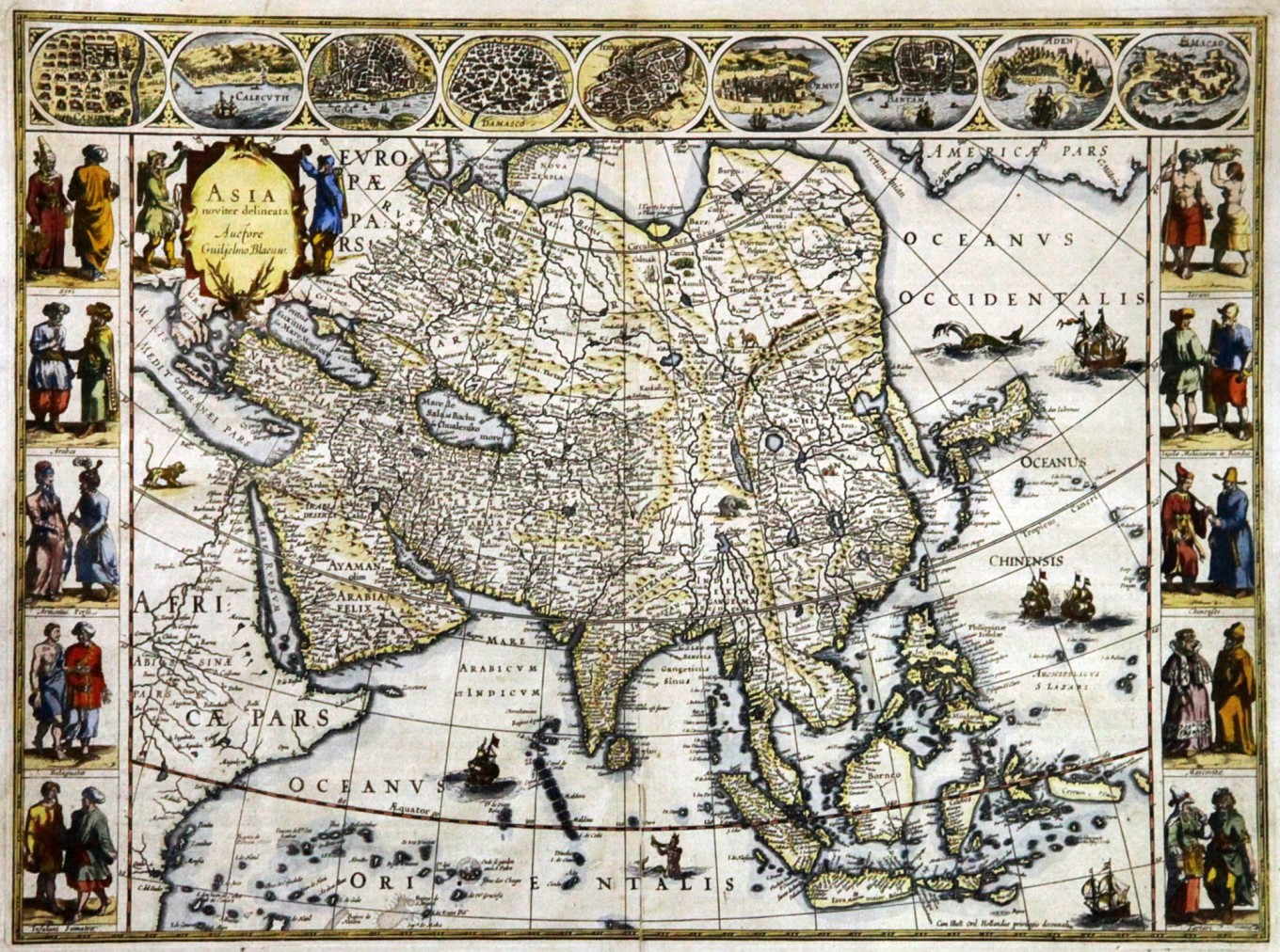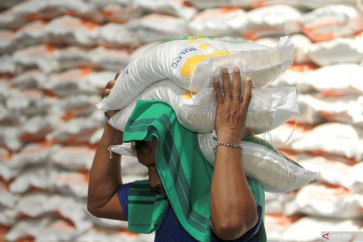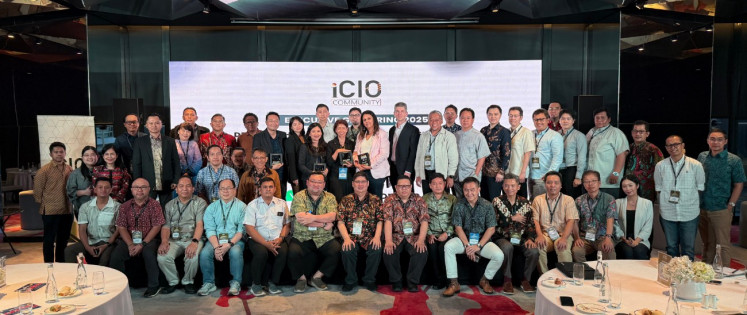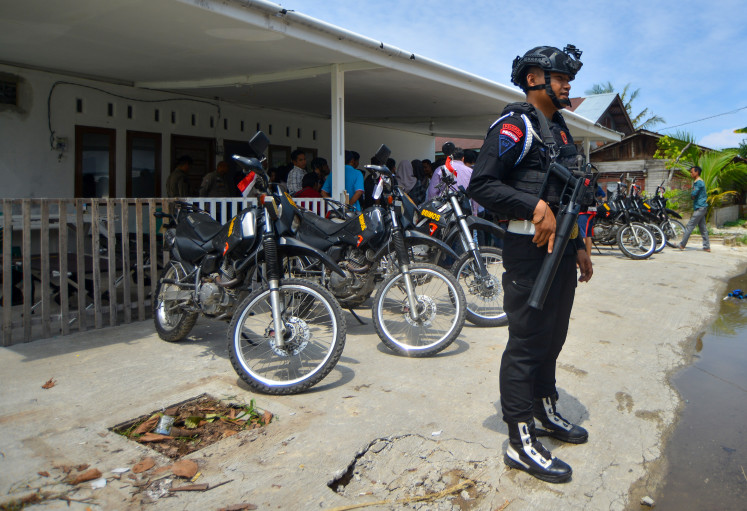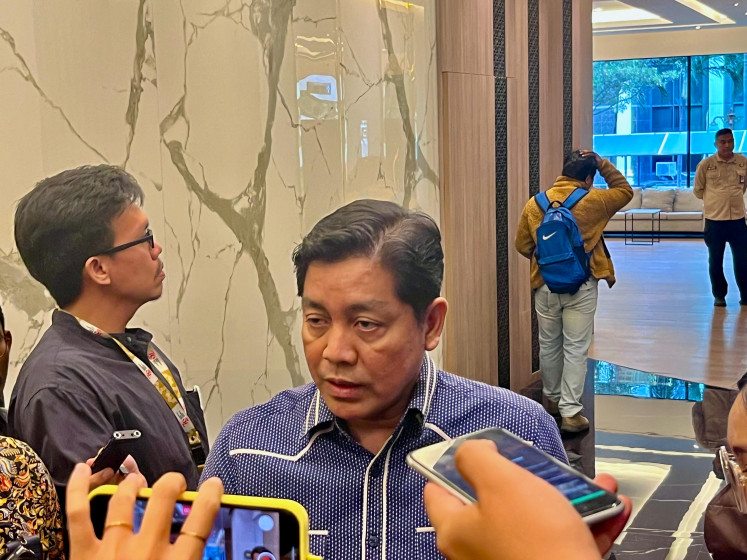Popular Reads
Top Results
Can't find what you're looking for?
View all search resultsPopular Reads
Top Results
Can't find what you're looking for?
View all search resultsOrigins of our national language
The development of the Indonesian language spanned hundreds of years, and was influenced by foreign traders from various parts of the world. Cultural factors, however, have hindered critical thinking and the establishment of a proper literacy tradition.
Change text size
Gift Premium Articles
to Anyone
Sebastian Partogi
The Jakarta Post/Depok, West Java
The development of the Indonesian language spanned hundreds of years, and was influenced by foreign traders from various parts of the world. Cultural factors, however, have hindered critical thinking and the establishment of a proper literacy tradition.
The development of both oral and written usages of our national language Bahasa Indonesia – essentially a dialect of Malay, a major language of the Austronesian family – has occurred over thousands of years and involved numerous foreign influences thanks to human migration, trade and colonization.
The successful nationwide adoption of Bahasa Indonesia is owed, in particular, to the history of the spice trade, starting in the 15th and 16th centuries, which saw Europeans arrive in Indonesia seeking fortune from the country’s prized endemic spices.
According to University of Indonesia Cultural School linguistics department lecturer Mohammad Umar Muslim, the Malay language was brought to Indonesia by migrants from Thailand who arrived in the country as early as the first century.
“The migrants introduced the language to people living on the islands we know today as Kalimantan and Sumatra. In Sumatra, for instance, the ancient Malay language evolved into the local Minangkabau language. From there, Malay in Indonesia has continued to evolve,” he said.
Although ancient Indonesians spoke Malay, the letters used for written communication varied based on the influences of foreign traders who arrived as early as the fifth century, according to National Archaeology Research Center researcher Bambang Budi Utomo.
“Inscriptions found in the ancient Tarumanegara kingdom in West Java, for instance, use the ancient Pallawa letters brought by Indian traders who started coming to Indonesia in the fifth century,” he said.
During the eighth and ninth centuries trends started to shift whereby inscriptions started to use a Javanese variant of the Arabic letters brought by Arabic traders who came to Indonesia.
“The Javanese variants of the Arabic letters eventually became what we know today as ancient Javanese letters,” Bambang explained.
Things, however, started to change under Dutch occupation, when van Obhuisen introduced Latin letters to local elites, which are used until today for written communication.
During the time of the ancient kingdoms right through to the period of colonization, written language was monopolized by the political elite, who adopted letters from Indian traders to communicate with one another. The kingdoms’ subjects, meanwhile, used only oral communication, according to Bambang.
He said that this was also the reason for the scarcity of local sources related to the history of the ancient kingdom of Sriwijaya, which rose to power in the seventh century and declined around 500 years later.
“Most of the sources we have are from records written by Arab and Chinese traders, who had a strong tradition of written communication,” Bambang explained.
Toward the end of Dutch occupation, however, the colonists began introducing schools for poor Indonesians so more people could become literate. During the national movement period, nationalist campaigns called for the Indonesian language – derived from its Malay roots – to be used as the national language.
The use of our local Malay dialect as the national language, called bahasa Indonesia, was established by nationalists during the Second Youth Congress in 1928.
“The campaign was successful not only because Malay had been used as a lingua franca for trading purposes across Indonesia for centuries but, curiously enough, also because the Malay ethnic group constituted only a small percentage – less than ten percent – of Indonesia’s entire population,” Mohammad said.
According to Mohammad, ironically, if Indonesia had chosen the Javanese language – spoken by an ethnic group that constitutes more than 50 percent of Indonesia’s total population – as the national language instead, it might have triggered social jealousy because of the higher visibility of the Javanese people.
“This is also the reason why the adoption of Hindi as the national language in India has not been as successful as the Indonesian language here, not only because Hindi is associated with a particular ethnic group, which is quite large there, but also because English is more popular among Indians,” he explained.
In a way, we should acknowledge the contributions of the Thai migrants, the Indian and Arab traders as well as the Dutch colonialists in shaping the use of our national language as we know it today.
A more in-depth version of this article will be published at The Jakarta Post on Oct. 24.

